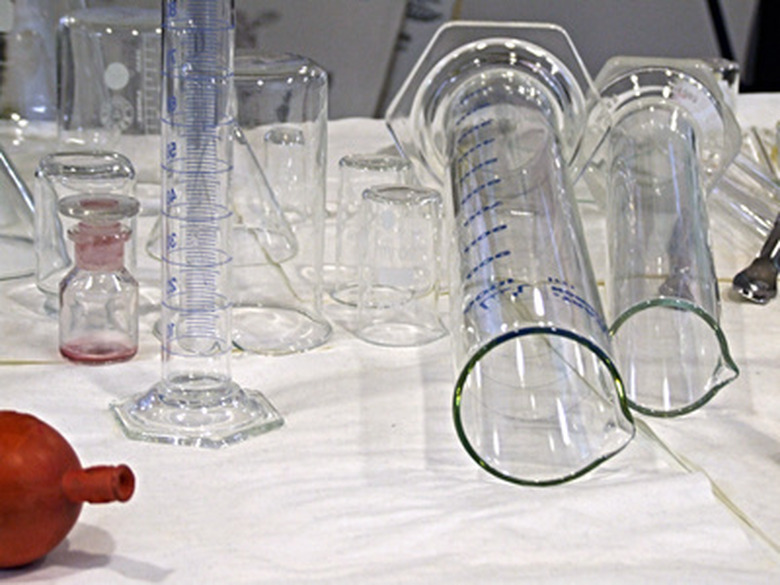How To Calculate Moles
Often in chemistry a solute is added to a solution. One of the most frequent tasks is to determine the concentration of that solute in the solution. This calculation is referred to as the molarity of the solution.
Step 1
Learn the equation: M=moles solute/liters solution. "M" represents the molarity, or concentration, of the solute in the solution.
Step 2
Convert grams of solute into moles of solute. You will need a periodic table in order to do this. To calculate the moles of solute you will need to divide the weight in grams you have added to the solution by the weight in grams of one mole. For this example, use sodium chloride: NaCl. The weight of one mole, rounded to the nearest tenth, is the atomic weight of sodium, 23g, plus the atomic weight of chorine, 35.5. Therefore one mole of solute would be 58.5g. Assuming for this example that there are 24g of NaCl, the conversion would be: 24/58.5=.41 moles of solute.
Step 3
Measure the amount of solution. The solution will be in liters before the final calculation but can be taken in milliliters. In this example, the amount of solution will be 650 mL. Converting this into liters: 0.65 L.
Step 4
Calculate the molarity of the solute in the solution: M=moles solute/liters solution. Using the example given: 0.41 moles solute/0.65 liters solution=.63 M–rounded to the nearest hundredth.
Things Needed
- Calculator
- Periodic table
TL;DR (Too Long; Didn't Read)
Keep in mind that molarity simply stands for moles of solute per liter of solution. Round atomic weights according to the specifications you are using.
Warning
Remember to translate milliliters to liters of solution.
Cite This Article
MLA
Contributor, . "How To Calculate Moles" sciencing.com, https://www.sciencing.com/calculate-moles-4828641/. 24 April 2017.
APA
Contributor, . (2017, April 24). How To Calculate Moles. sciencing.com. Retrieved from https://www.sciencing.com/calculate-moles-4828641/
Chicago
Contributor, . How To Calculate Moles last modified March 24, 2022. https://www.sciencing.com/calculate-moles-4828641/
